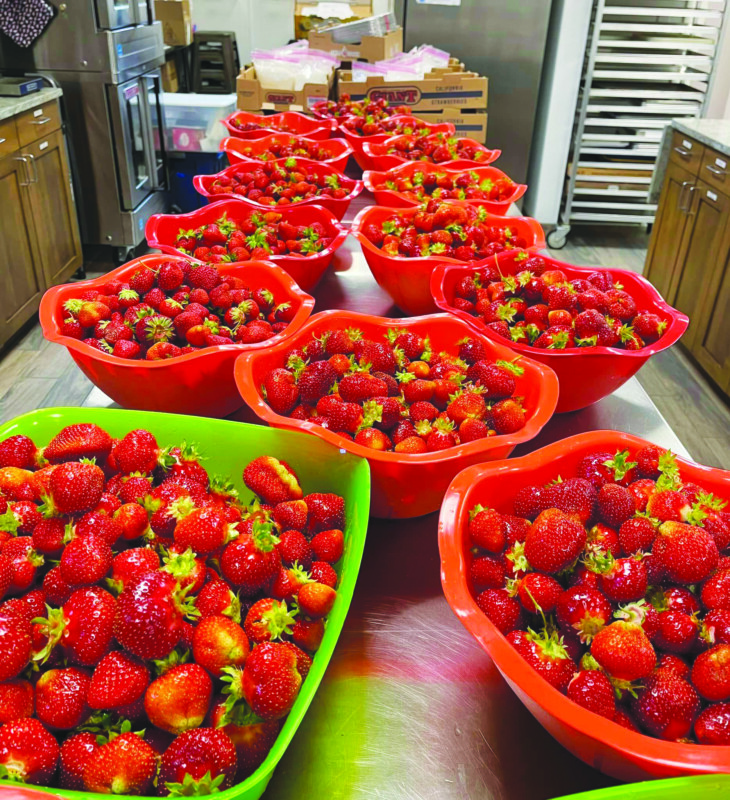Strawberry Sunday in Hollis
By John Fladd
jfladd@hippopress.com
If you had to feed more than 1,000 guests, what would it take?
If you were part of the Hollis Woman’s Club (holliswomansclub.org), you’d start with 65 sheet pans of shortcake biscuits, 58 quarts of cream and 360 quarts of strawberries, then go from there.
For the past 80 years or so, the Town of Hollis has held a strawberry festival each June.
“The Town Band was founded in 1943,” said Ardie Henry, the Festival’s Director of Communications. “The first record we have of a strawberry festival is in 1946.” The Festival was a Town Band project until the 1970s. By that time, Henry said, “it had gotten too large to be handled by just one organization, so the Hollis Woman’s Club stepped in to help. Since 1978, it has been a combined effort of the Town Band, who play the music, and the Woman’s Club, [who] does the strawberry dessert part.”
For a small town event, the annual Strawberry Festival pulls in a lot of visitors.
“The most we’ve ever had is 1,300,” said Henry, “and last year we had 1,100, so we make a lot of shortcake, hull and cut a lot of strawberries, and whip a lot of cream. It’s a very large effort.” The Woman’s Club members make almost everything themselves.
“We don’t make the strawberries,” Henry said. “We get them locally from Brookdale Farm, right in Hollis. But we make everything else by hand. We have available strawberry shortcake, strawberry ice cream and strawberry sundaes.” The ice cream comes from Dr. Davis Ice Cream in Pepperell, Mass.
Although the festival, the band and the Woman’s Club are all centered in Hollis, the festival is a team effort spread out across many towns.
“This is one of the major fundraisers for the organizations [the Woman’s Club and the Town Band],” the Woman’s Club wrote in a recent press release, “each of which offers scholarships and supports other community endeavors. The Hollis Town Band currently has seventy members on its roster coming from eighteen different communities.” The Women’s Club is just as wide-ranging, said Ardie Henry. “It has approximately 80 members. There are women from Hollis, Brookline, Nashua, Milford, Amherst, Northwood, Merrimack and other surrounding towns, including northern Mass.” According to the press release, all members of the Women’s Club are requested to participate in some capacity. “We have several women who volunteer to bake,” Henry said, adding that other jobs include hulling, washing, slicing and sugaring more than 500 pounds of strawberries.
Henry said she personally is looking forward to good weather. Ideally, she said, “people bring their chairs and blankets, and if they want to have a late lunch and then have their strawberry shortcake, they can do that.”
The Hollis Strawberry Festival
When: Sunday, June 23, 2 to 4 p.m.
Where: Hollis Town Common, 7 Monument Square, Hollis (in the event of inclement weather, the Strawberry Festival will be moved to the Hollis Brookline Middle School, 25 Main St., Hollis)






